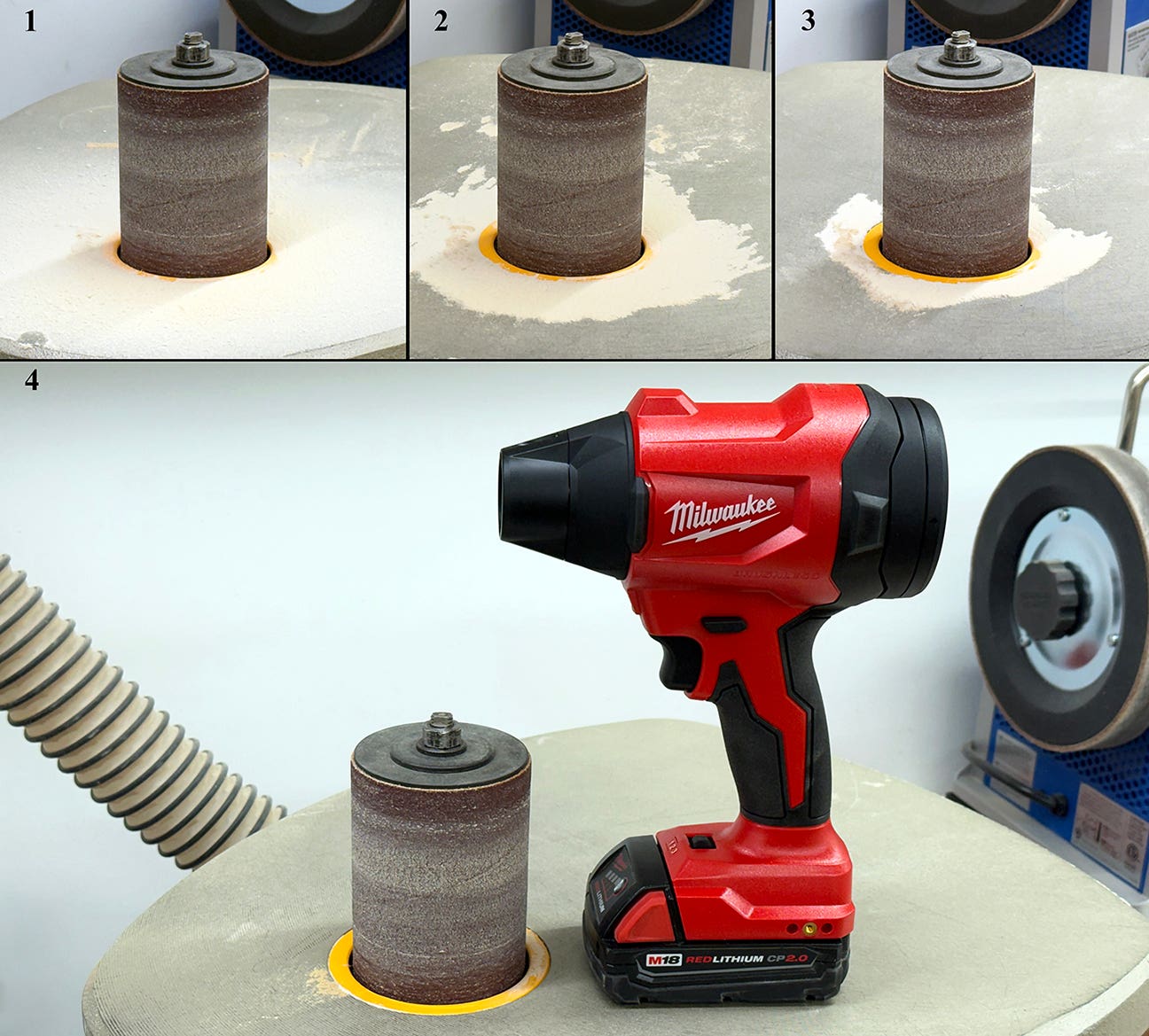Get a grip: Hold-down methods for CNC routers
Just like a worktable or workbench, a CNC router needs a surface on which to place sheet goods or lumber stock and a way to hold those materials in place…
Just like a worktable or workbench, a CNC router needs a surface on which to place sheet goods or lumber stock and a way to hold those materials in place when they are being machined.
The simplest work surface is a piece of MDF attached to the structure of the CNC router. This is often called a spoilboard. Usually the MDF is screwed to the structure from under the machine and then the top of the MDF is leveled with a surfacing bit so the work surface is level and perpendicular relative to the shaft of a bit in the collet of a spindle or a router. The simplest method of work holding is to just use some drywall screws. Unfortunately, the screws holding down the material seem to draw the bit to them like a moth to a flame.
The next step up can take several directions depending on the intended use of the CNC router. The first method uses a vacuum to hold the material. If the machine is used for high-speed production of cabinet parts, MDF is used for the spoilboard over a large tray. The tray, usually the size of the working area of the CNC router, is a plenum for a vacuum system and together this all is known as a flow-through vacuum hold-down work surface. The MDF is porous enough to secure a full-sized panel securely and flat. The amount of vacuum needed is significant, requiring 20- to 25-hp vacuum pumps.
But this type of work holding is not easy to use when cutting parts smaller than on a full sheet of plywood or when cutting lumber stock. To limit vacuum loss in areas where there is no material placed, some users lay a sheet of 1/4” plywood, plastic or rubber floor runners over the open areas to enhance the vacuum.
A more versatile vacuum-based method is a gridded work surface or spoilboard with zoned delivery of the vacuum. This method also uses MDF, machined with numerous small squares to zone the vacuum. The zoning is accomplished by PVC piping and simple hand-turned valves and then the vacuum is delivered through the series of holes that are regularly spaced within the center of some of the small squares in the grid pattern. The grids are usually cordoned into sections by channels with rubber tubing for more specific work holding.
Often CNC routers like this will have two smaller vacuum pumps instead of one large pump. This option can have a modest increase in the initial cost of the CNC router. However, only one pump needs to be used when machining smaller parts or partial pieces of sheet goods.
The next variation is a vacuum pod, which can be as simple as a piece of plywood that fits within the grid dimensions of a spoilboard and over one of the holes that deliveries the vacuum. With the workpiece secured above the spoilboard, an edge can be profiled without interference from the work surface or causing excess wear on a router bit.
Vacuum pods are available in plastic or aluminum and can either rely on the CNC router’s vacuum pumps as explained above or can operate through the use of a small stand-alone pump. Most of these pods have vacuum control valves to operate when needed.
Some CNC routers simply have pods attached to rails without a spoilboard. This type of setup is usually used with very sophisticated CNC wood-machining centers that can have multiple spindles with automatic tool changers as well as drills. They can machine in up to six axes and often work in conjunction with other CNC machines that can, for instance, apply a variety of edge bandings or hardware.
T-track is used as a non-vacuum work-holding method because of its versatility. In some cases there is an aluminum T-track panel that serves as the primary machine top. The T-track is elevated above the aluminum top with MDF between the T-track to provide a level surface or the T-track is imbedded directly into the MDF spoilboard.
There are a variety of work-holding devices that can be affixed to the slots in the T-track. Some that come to mind are:
• Justification pins, which allows for precisions workpiece alignment relative to a machining operation
• Eccentric horizontal cams that can be used to hold a workpiece firmly against a fence that is also mounted to the T-track
• Vacuum pods to hold small pieces in an elevated position so work can be done on the edge of the workpiece without the router bit colliding with the aluminum T-track.
• T-track systems are used on both large and small CNC routers and can add immeasurably to the versatility of both types of machines, though the T-track holding system is not well-suited to holding an entire panel of sheet goods as the center will tend to bow up when pressure is applied to opposing side of the materials.
Ultimately, the choice of a work surface and work-holding method depends on the type of CNC router and its intended use.
A large shop making cabinets from sheet goods will tend to the vacuum systems, while a small shop making one-off pieces of furniture might be better served with a combination of T-track and vacuum pods.
This article originally appeared in the November 2014 issue.
A.J. Hamler is the former editor of Woodshop News and Woodcraft Magazine. He's currently a freelance woodworking writer/editor, which is another way of stating self-employed. When he's not writing or in the shop, he enjoys science fiction, gourmet cooking and Civil War reenacting, but not at the same time.







